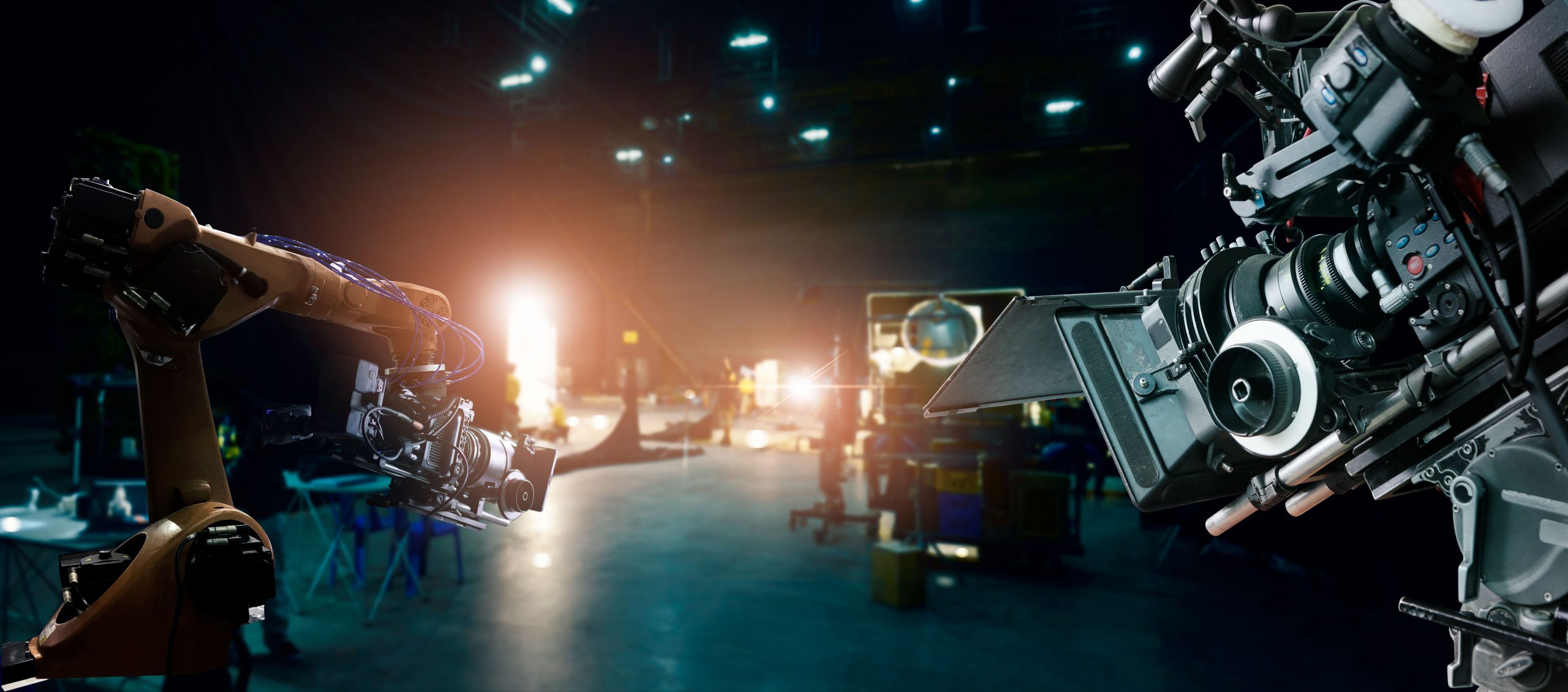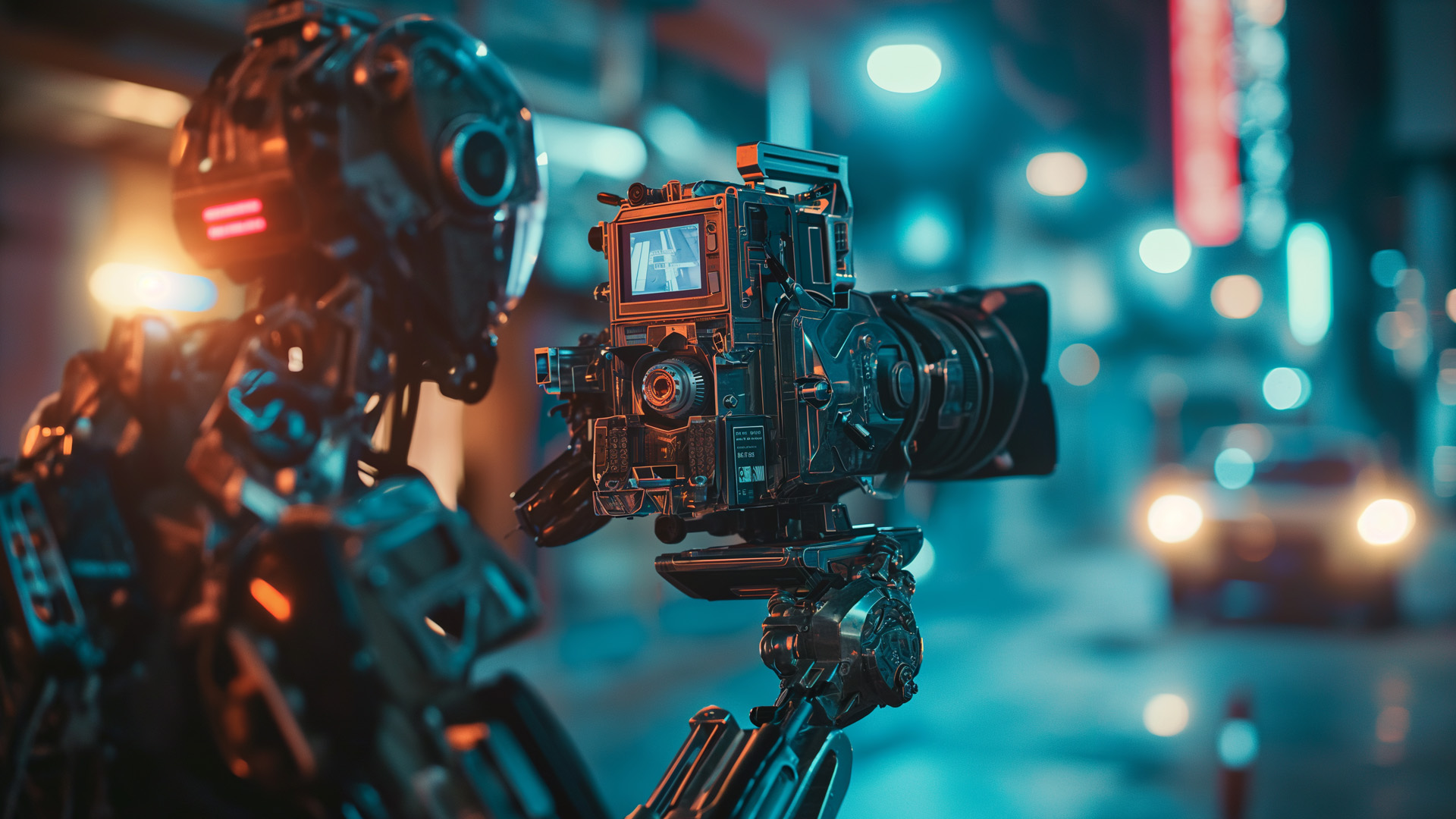Artificial Intelligence (AI) has permeated almost every aspect of modern life, and the creative industries are no exception. From Hollywood to the music industry, AI’s influence is both profound and contentious. While some hail AI as a revolutionary tool that can augment human creativity, others fear it may undermine the very essence of human artistic endeavor. This article explores the multifaceted impact of AI on creative fields, presenting a balanced view that acknowledges both the opportunities and challenges this technology brings.

The Rise of AI in Creative Fields
AI’s Entry into Hollywood and Visual Arts
AI’s capabilities have grown exponentially, allowing it to create high-quality visual and written content. In Hollywood, AI tools have been used to de-age actors, as seen with Harrison Ford in “Indiana Jones and the Dial of Destiny.” This application of AI sparked significant debate, leading to strikes by the Writers Guild of America (WGA) and the Screen Actors Guild-American Federation of Television and Radio Artists (SAG-AFTRA). These strikes highlighted the industry’s concerns about AI potentially replacing human creativity and the need for protective measures for human artists (World Economic Forum) (World Economic Forum).
AI in the Music Industry
The music industry has also felt AI’s impact. Notable examples include Grimes offering to share royalties with musicians who create AI-generated tracks using her voice and the release of a new Beatles single featuring AI-extracted vocals from John Lennon. These instances demonstrate how AI can enhance creative capabilities and offer new opportunities for collaboration and innovation in music (World Economic Forum).
Opportunities Presented by AI

Enhancing Productivity and Creativity
One of the most significant benefits of AI in creative industries is its ability to enhance productivity. AI tools can automate labor-intensive tasks, allowing artists and creators to focus on more complex and creative aspects of their work. For instance, AI can help writers generate content ideas, streamline the writing process, and even edit and polish final drafts. Similarly, in visual arts, AI can assist in generating design concepts, optimizing color schemes, and producing intricate patterns that might be time-consuming for humans to create manually (McKinsey & Company).
Democratizing Creativity
AI has the potential to democratize creativity by making advanced tools accessible to a broader audience. This democratization can lead to a more diverse range of creative outputs and allow individuals without formal training to experiment and innovate. For example, AI-powered design platforms enable users to create professional-quality graphics and animations with minimal effort, opening up creative opportunities to hobbyists and amateur artists (McKinsey & Company).
Challenges and Ethical Considerations
Job Displacement and Automation
While AI presents numerous opportunities, it also poses significant challenges, particularly concerning job displacement. The fear of automation replacing human jobs is a prevalent concern in creative industries. Research suggests that generative AI has the potential to automate up to 26% of tasks in arts, design, entertainment, media, and sports sectors. This potential for automation has led to anxiety among creative professionals about the future of their careers (World Economic Forum).
Ethical and Legal Issues
The ethical implications of AI in creative fields are complex and multifaceted. Issues such as data privacy, copyright infringement, and the ethics of AI-generated content are at the forefront of these discussions. Different countries have varying regulations regarding the copyright of AI-generated works, generally requiring substantial human involvement for such works to be eligible for copyright protection. This lack of uniformity highlights the need for clear and consistent guidelines to navigate the ethical landscape of AI in creativity (World Economic Forum) (McKinsey & Company).
The Human Element in Creativity

Despite AI’s advancements, there is a growing consensus that AI cannot replace the human element in creativity. Creativity is deeply rooted in human experience, emotions, and cultural contexts, aspects that AI cannot fully replicate. While AI can mimic certain creative processes, it lacks the intrinsic human qualities that make art meaningful and impactful. This perspective emphasizes the role of AI as a tool to enhance and enable human creativity rather than replace it (World Economic Forum).
Case Studies and Real-World Applications
AI in Visual Arts: The PATH-AI Residency
The PATH-AI residency, developed by the Alan Turing Institute, the University of Edinburgh, and the RIKEN research institute, showcases how AI can be integrated into creative processes. This program supports artists in creating works that blend AI with personal and cultural narratives. For instance, Nouf Aljowaysir’s film, which tracks her immigration path to the US with the support of an AI assistant, exemplifies how AI can enrich storytelling by providing new dimensions and insights (USA Art News).
AI in Marketing and Advertising
In the marketing industry, AI has been used to create innovative advertising campaigns. Heinz’s AI-generated artwork for its ketchup bottles is a prime example. By using DALL-E 2, Heinz produced a series of artistic styles that reimagined its iconic bottle, leading to one of the world’s first AI-generated advertising campaigns. This example demonstrates how AI can bring fresh perspectives and creativity to commercial projects (World Economic Forum).
Balancing Innovation and Ethics
The integration of AI into creative industries necessitates a delicate balance between innovation and ethical considerations. Organizations must prioritize responsible AI governance, ensuring that AI tools are used ethically and transparently. This involves addressing issues such as data privacy, intellectual property rights, and the potential biases in AI algorithms. Establishing clear guidelines and ethical frameworks will help mitigate the risks associated with AI while maximizing its benefits (McKinsey & Company).
Conclusion
AI’s impact on creative industries is profound and multifaceted, offering both significant opportunities and challenges. While AI can enhance productivity, democratize creativity, and provide innovative solutions, it also raises concerns about job displacement, ethical implications, and the preservation of the human element in art. The key to navigating this complex landscape lies in viewing AI as a tool that complements and enhances human creativity rather than replacing it. By striking this balance, the creative industries can harness the full potential of AI while maintaining the integrity and authenticity of human artistic expression.
As we continue to explore the capabilities of AI, it is crucial to foster open dialogues and collaborations between technologists, artists, and policymakers. This collaborative approach will ensure that AI is integrated into creative processes in a way that respects and enhances human creativity, leading to a future where technology and art coexist harmoniously.
Sources:
- World Economic Forum. (2024). How AI is impacting and shaping the creative industries.
- Artsy. (2024). How AI Is Changing the Art Market.
- McKinsey & Company. (2024). The state of AI in early 2024: Gen AI adoption spikes and starts to generate value.
- USA Art News. (2024). ‘AI will become the new normal’: how the art world’s technological boom is changing the industry.
- CVPR. (2024). CVPR 2024 to Showcase AI Art Gallery, Feature Prominent AI Artist Sofia Crespo as Keynote.
